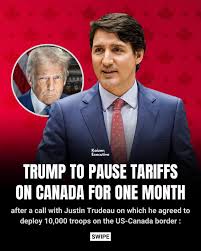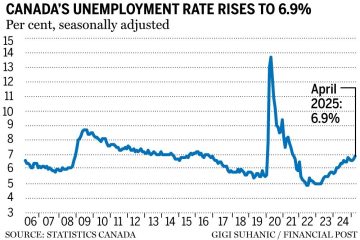Impact of Donald Trump’s Tariffs on Canada

Introduction
The topic of tariffs, particularly those imposed by former President Donald Trump on Canadian goods, remains crucial in understanding the dynamics of Canada-U.S. trade relations. The tariffs, established primarily in 2018, have since shaped economic interactions between these neighboring countries. As global trade continues to evolve, the implications of such tariffs serve as a significant case study for economists and policymakers alike.
Overview of Trump’s Tariffs
In June 2018, Donald Trump announced tariffs on steel and aluminum imports, including those from Canada, citing national security concerns. The tariffs imposed a 25% duty on steel and 10% on aluminum. Canada, as the largest exporter of both metals to the U.S., was notably affected. This move was part of a broader trade policy from the Trump administration aimed at protecting American industries purportedly threatened by cheaper foreign imports.
Response from Canada
The Canadian government responded swiftly, imposing retaliatory tariffs on a wide range of U.S. products, including whiskey, chocolate, and various meats. These tariffs were seen not only as a direct economic measure but also as a symbolic stand against American protectionism. Furthermore, Canada’s trade actions demonstrated its commitment to defending its industries and jobs against unilateral tariff decisions by its southern neighbor.
Current Trade Relations
As of late 2023, the landscape of trade relations between Canada and the U.S. has seen some shifts. The Biden administration has taken certain steps to re-evaluate the tariffs, although many remain intact due to ongoing discussions about various trade agreements, including USMCA (United States-Mexico-Canada Agreement). Ongoing tensions still exist, especially regarding the disputes over softwood lumber and dairy products. Additionally, President Biden’s focus on domestic manufacturing under the ‘Build Back Better’ initiative, while generally welcomed, has raised concerns in Canada about the future of cross-border trade.
Conclusion
The implications of Donald Trump’s tariffs on Canada continue to resonate in the economic landscape today. While some progress has been made in simplifying aspects of trade relations, many challenges remain. The lingering tariffs serve as a reminder of the complexities involved in international trade policies. Moving forward, the relationship will likely be shaped by negotiations, economic realities, and evolving political landscapes in both countries. Readers should remain aware of ongoing developments, as changes could have significant repercussions for industries and consumers on both sides of the border.









